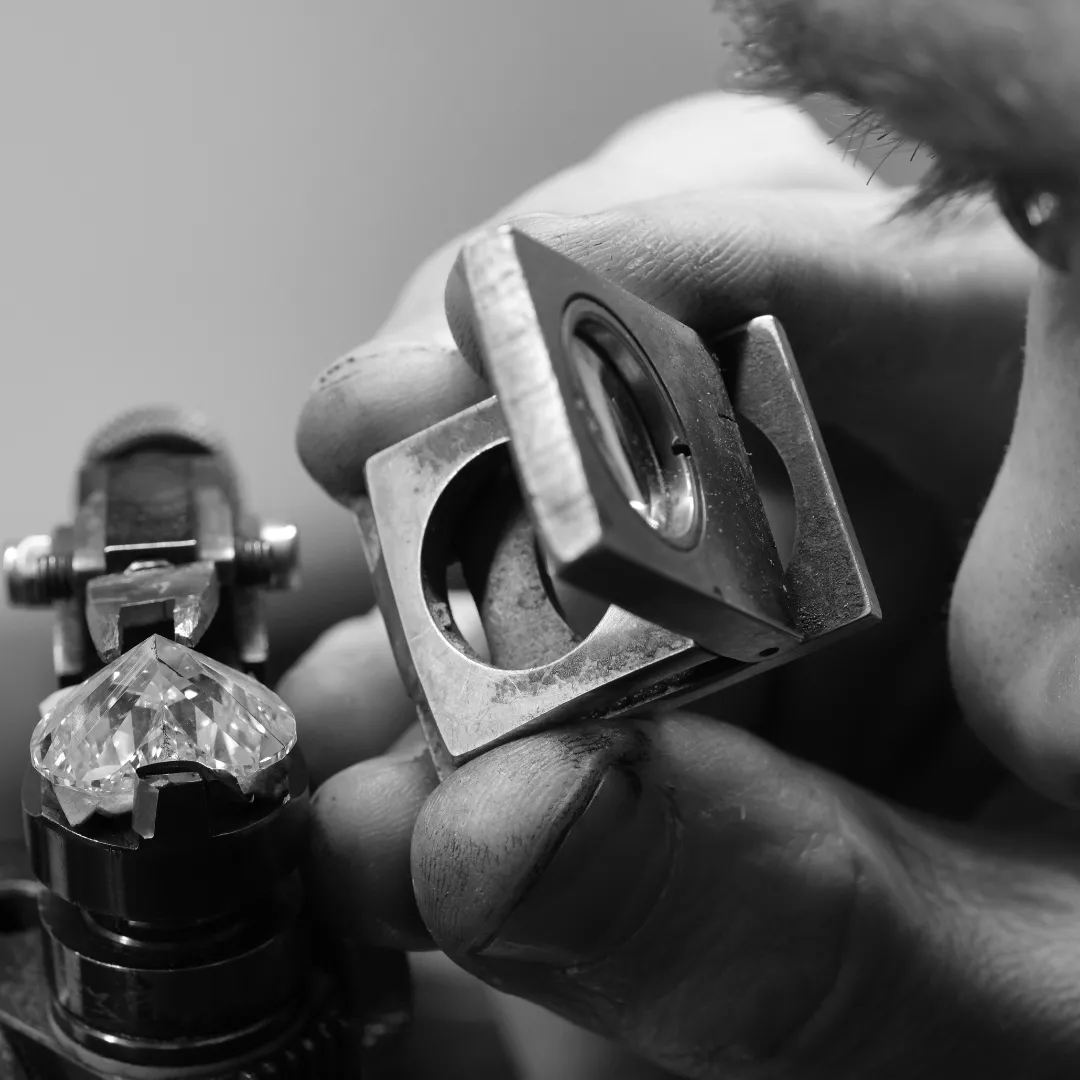Diamond Grading
Diamond grading is the process of evaluating a diamond’s quality and characteristics based on a standardized set of criteria. It provides a universally understood method for determining a diamond’s value. Grading reports, often called certificates, are issued by independent gemological institutes and offer essential information for buyers, sellers, and jewelers.
The grading process involves a detailed analysis of the diamond using specialized tools and expertise. Factors like a diamond's cut, clarity, carat weight, and color—collectively known as the 4 C's—are carefully examined.
These 4 C’s and the certification process are fundamental pillars of the diamond industry, ensuring that buyers and sellers have a common language to assess quality. By working with trusted grading institutes, staying informed about ethical practices, and verifying the authenticity of certificates, you can navigate the diamond industry with confidence. Whether you’re purchasing a diamond, reporting on the trade, or studying the field, these principles provide a solid foundation for understanding this fascinating industry.


The 4 C's
What Are the 4 C's?
The 4 C’s provide the foundation for diamond grading and are essential for understanding a diamond’s quality:
1. Cut
The cut of a diamond determines how well it reflects light, directly impacting its brilliance and sparkle. The cut refers to proportions, symmetry, and polish, not the diamond’s shape (such as round or oval). A well-cut diamond maximizes its natural beauty, while a poorly cut diamond may appear dull. Grading categories range from Excellent to Poor.
2. Color
Color grading assesses how colorless a diamond is. The Gemological Institute of America (GIA) uses a scale from D (completely colorless) to Z (light yellow or brown). The closer a diamond is to being colorless, the higher its value.
3. Clarity
Clarity measures the presence of internal inclusions and external blemishes. Diamonds are graded from Flawless (no visible inclusions under 10x magnification) to Included (visible inclusions that may affect appearance and durability).
4. Carat Weight
Carat refers to the weight of a diamond. One carat equals 0.2 grams. Larger diamonds are rarer and therefore more valuable, but carat weight should be considered alongside the other three C’s for a complete assessment of quality.
The Leading Grading Institutes
Several internationally recognized institutes specialize in diamond grading and certification. These organizations provide unbiased, comprehensive certificates that are trusted worldwide:
1. Gemological Institute of America (GIA)
2. International Gemological Institute (IGI)
3. Hoge Raad voor Diamant (HRD Antwerp)


What Should Customers be Wary of?
While diamond grading provides transparency, there are several aspects to be cautious about when purchasing or evaluating diamonds:
1. Inconsistent Grading Standards
Not all certification labs adhere to the same grading standards. Less reputable labs may issue overly generous grades, inflating the perceived value of a diamond. Always prioritize reports from recognized institutes like GIA, IGI or HRD Antwerp.
2. Misleading Terms
Be cautious of vague terms like "certified diamonds" without specifying the issuing institute. A certificate is only as credible as the organization behind it.
3. Synthetic and Treated Diamonds
Advances in technology have made lab-grown and treated diamonds indistinguishable to the naked eye. Ensure that the certificate explicitly states whether a diamond is natural or synthetic and discloses any treatments.
4. Counterfeit Certificates
Forgery is a real concern in the diamond trade. Always verify the authenticity of a certificate with the issuing institute by using their online report verification tools.
How to Make Informed Choices
Whether you’re a professional, journalist, or student, understanding the intricacies of diamond grading and certification is crucial for navigating the industry.
Here are some tips to keep in mind:
- Always ask for a certificate from a reputable grading institute.
- Understand the 4 C’s and how they interact to affect value.
- Verify the origin of the diamond to ensure ethical sourcing.
- Use online tools provided by grading institutes to confirm the authenticity of certificates.
- Consult an expert if you’re unsure about a diamond’s quality or legitimacy.
The Importance of Traceability in the Diamond Supply Chain
Beyond the 4 C’s, traceability is an increasingly important factor in today’s diamond industry. Ethical concerns surrounding conflict diamonds (often called "blood diamonds") have led to initiatives like the Kimberley Process, which seeks to prevent the trade of diamonds used to fund armed conflicts. Consumers and industry professionals alike are demanding greater transparency regarding a diamond’s origin. Blockchain technology and traceability programs now allow buyers to track a diamond’s journey from mine to market, ensuring ethical sourcing practices.

